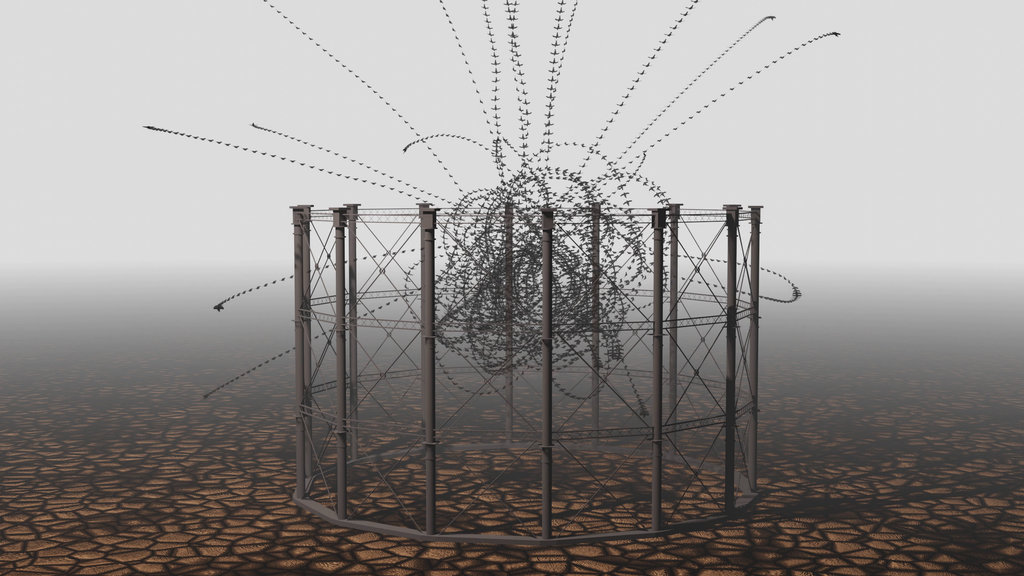In the deepest part of the lockdown, when the vast majority of people were staying at home, the skies cleared from plane trails and nature pushed back into spaces that were previously guarded by humans. It became a manifestation of A World Without Us in our lifetimes and inspired this series of images that visualises the return of nature to an overtly industrial form of a gas holder (aka gasometer) that are mostly defunct now but still remain as everyday imposing reminders of how technology moves on.

In the exhibition A World Without Us, which was on show at IMPAKT in 2018, various artists reflected on the idea of a world without people, caused by the destructive way in which we treat our environment. In the non-fiction book The World Without Us (2007), American journalist Alan Weisman describes what would happen to the planet if people suddenly disappear; which traces of human civilization would soon be lost, how cities and houses would perish, what materials and structures would survive the longest, and how different non-human organisms would develop after the disappearance of humanity.
We asked the artists who took part in the exhibition in 2018 to rethink the exhibition theme, taking into account their current knowledge and their own experience of the world during this pandemic. This resulted in a new web project: A World Without Us Revisited. The artists in this project offer visions of the contemporary world and our own position in it and how nature and technology relate to each other in various ways. Scroll through A World Without Us Revisited and discover photos with simulated flying birds, video works, a VR app, an “underwater” soundwork and remote-controlled robots that you can control from home.
This new body of algorithmic photographs are featured alongside several images created before the lockdown, as part of the new online IMPAKT revisitation of their 2018 exhibition “A World Without Us” alongside work by Taavi Suisalu, Daniel Rourke, IC-98, Ruben Baart, Katrin Hochschuh and Adam Donovan, Maarten Vanden Eynde, Morehshin Allahyari, and Robertina Sebjanic.
Artist Alex May uses a technique he calls Algorithmic Photography to combine thousands of frames of video filmed in the real world into a single image using a range of software algorithms that he has been developing since 2008. The resulting images reveal the subtle, complex, and often unnoticed movement that surrounds us at all times. Normally he creates images from the natural world but due to lockdown, going out on location was not possible, or allowed. Instead, for these series of images, Alex applied the same Algorithmic Photography technique to this digital scene, that he built and animated using the open source software Blender. These digital forms are following a swarming algorithm that approximates the movement of birds. They respond to each other’s proximity and programmatically flock and avoid each other and the frame of the gas holder. It is an algorithmic study of an algorithm. The world pictured certainly looks post-human, with its dried, cracked floor and impenetrable atmosphere, though on closer inspection, the floor itself is algorithmic: a combination of Voronoi patterns and computer generated noise, and the ‘birds’ themselves are low resolution and look somewhere between avian and human forms. These simulated entities will never be affected by the concerns of living birds and will endlessly circle each other forming a dark atom; a kingdom of their own without the influence of humans. As we slowly return to the world, we will carry with us the memory of this pandemic event and it will be seen whether it alters the direction we are heading or whether we will continue on with our own pre-programmed routine.